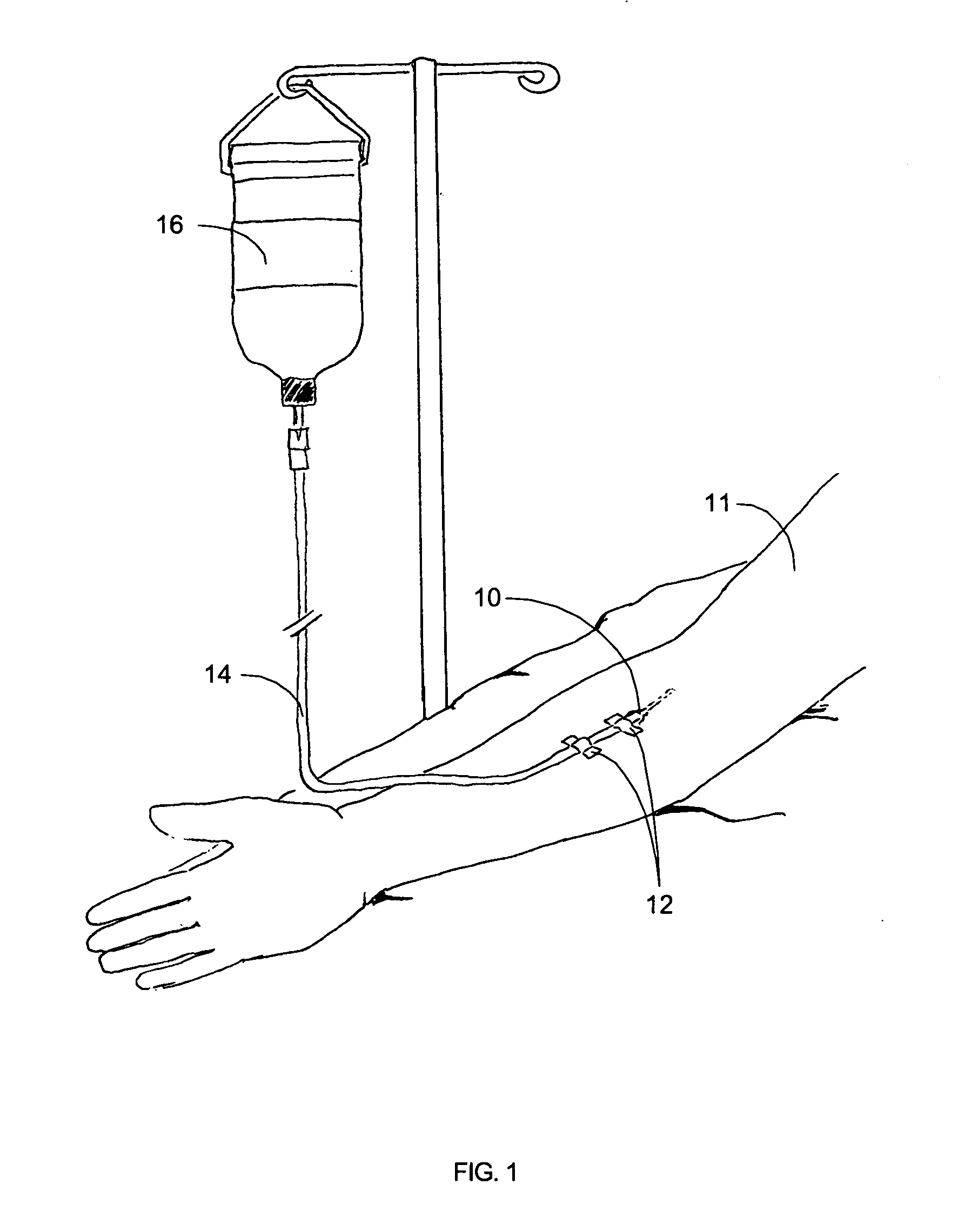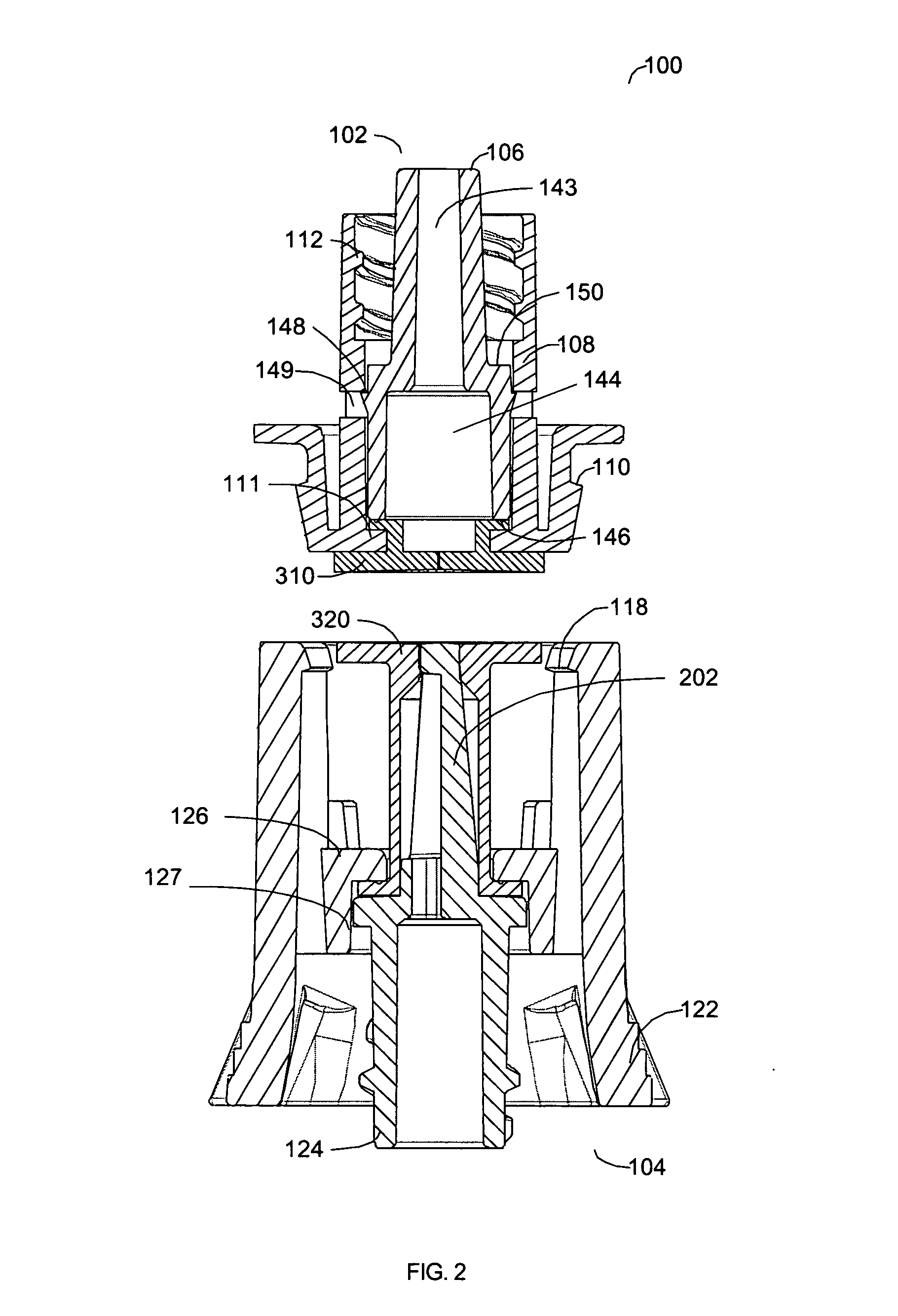Once these types of medical tubing lines are in place, it is difficult to remove and replace them.
This will subject the patient to increased pain.
Also, certain patients have inadequate veins or compromised health conditions, which may make an additional stick difficult.
Not only does this increase the discomfort to the patient, chances of accidental medical personnel sticks and
exposure to blood borne pathogens are also increased.
Whatever the type of medical tubing device used, additional difficulties arise for patients that are
ambulatory or for confused and pediatric patients.
Health
care workers or visitors can sometimes trip or become tangled in tubing while caring for the patient, causing injury to both the patient and the person entangled.
In the case of a typical IV device, this means that a pull on the tubing can, in turn, pull on the
IV catheter resulting in significant pain to the patient.
These additional procedures add to patient discomfort, increase medical costs, and
expose patients to additional
risk of infection.
The typical medical tubing device is unified and not designed to provide easy disconnection or automatic fluid flow interruption in the event of disconnection.
All of the valved disconnect devices described to date, however, suffer from
design characteristics that limit their usefulness for medical tubing devices.
Thus, such devices generally only allow fluid flow in one direction.
Also, repeated piercing of the needle through the septum can damage the septum, resulting in leaks or in the introduction of material from the septum into the flow line.
Further, even where a needle and septum arrangement is not employed, these types of devices typically only shut off fluid flow in one direction when disconnected.
Finally, none of these designs allows for automatic disconnection if a predetermined force is applied to the tubing.
A valved
assembly that does allow for automatic disconnection is described in U.S. Pat. No. 5,820,614, to Erskine et al. for “Disconnect for Medical Access Devices.” However, this device, due to a number of design limitations, does not adequately address many of the common problems with the use of IV lines that are encountered in the modern medical facility.
For example, the Erskine design does not adequately provide for intentional manual disconnection.
As a result, each disconnect—whether intentional or automatic—will cause additional wear on the collar and shoulder latching
assembly, which will decrease the number of additional times that the device may be disconnected and reconnected before the latching assembly is worn out.
The use of a spring in the design increases the cost of the device due to the cost of the spring and the increased assembly time.
The presence of the spring and the chamber housing the spring also increases the possibility of bacterial
contamination.
Because the septa are located behind (distal to) the connecting mechanism, the Erskine design does not permit easy access to critical sites that must be disinfected by swabbing with
alcohol or other appropriate
disinfectant solution.
Further, the design of the piercing cannula subjects the septum to
abrasive forces which degrade the material and lead to significant generation of debris which may be transported into the patient.
Although there are also numerous break-away hose connectors known and used in other fields, such as the
gasoline-dispensing device described in U.S. Pat. No. 4,905,733, these devices do not permit easy disinfection, which is critical in medical devices.
The non-
smooth surface prevents easy “swabbability” or disinfection of the device, thereby rendering the design unsuitable for the medical field.
 Login to View More
Login to View More  Login to View More
Login to View More 


